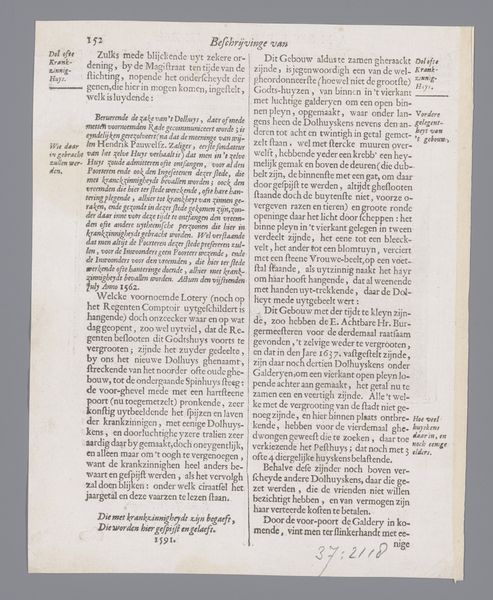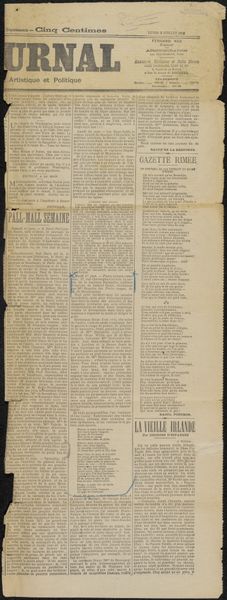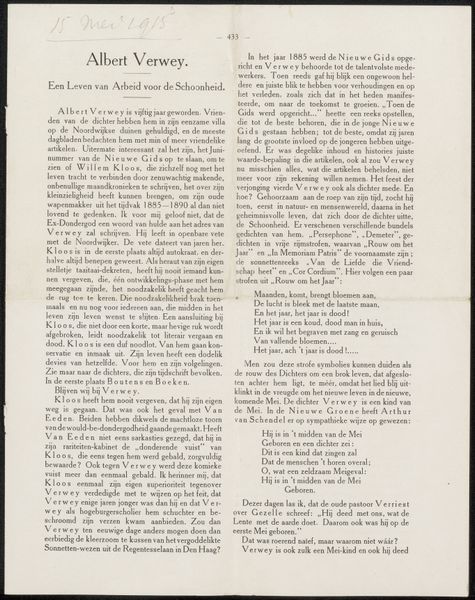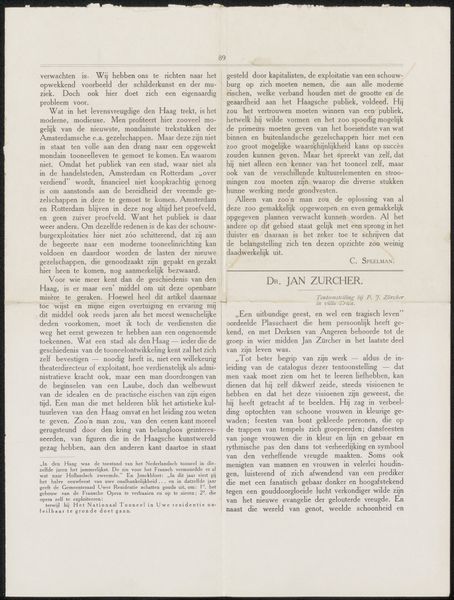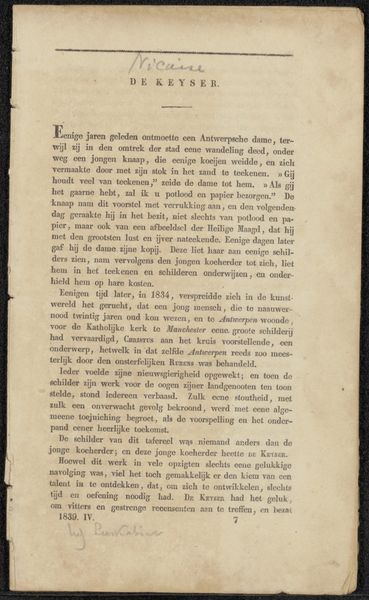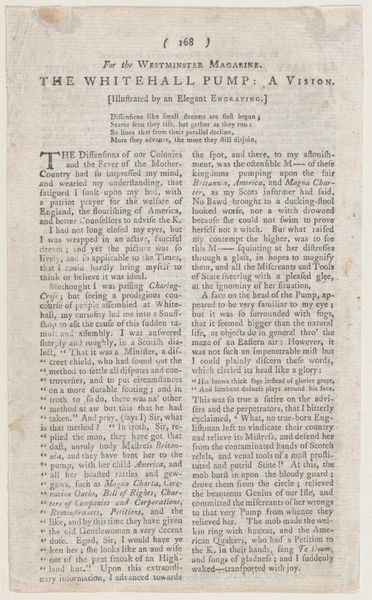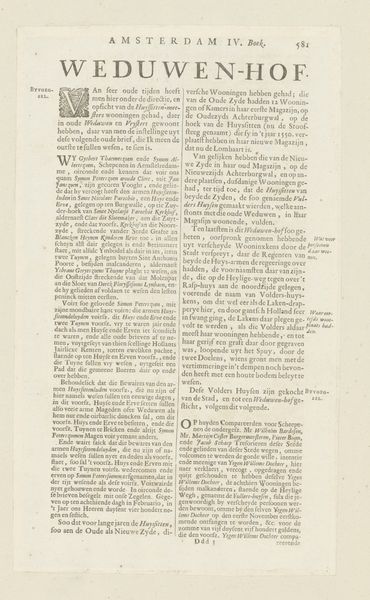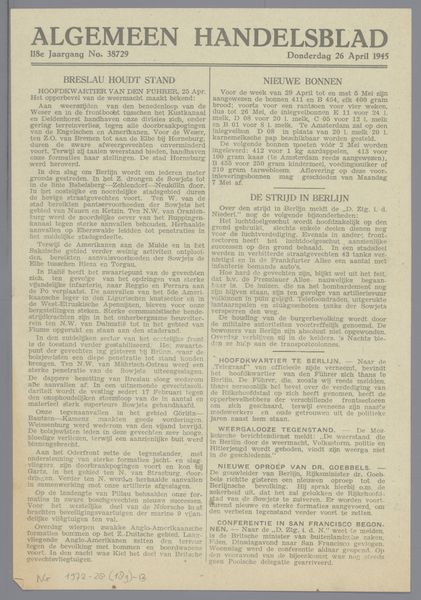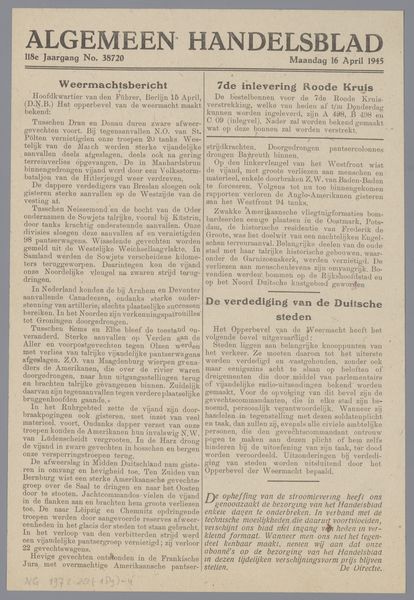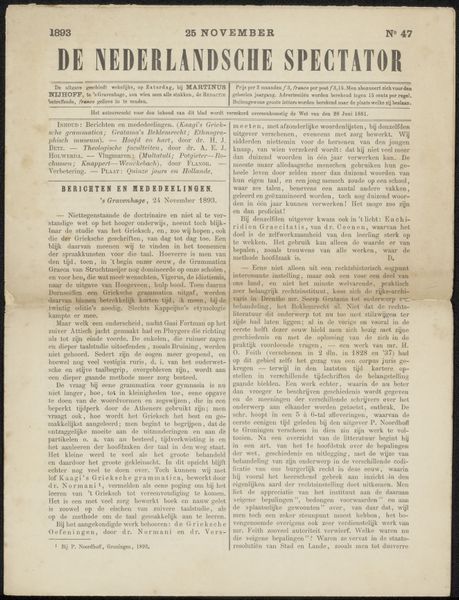
graphic-art, print, textile, paper, typography
#
graphic-art
# print
#
textile
#
paper
#
typography
Copyright: Rijks Museum: Open Domain
Curator: This object, entitled “Krantenknipsel uit archief Philip Zilcken,” roughly translated as "Newspaper clipping from the Philip Zilcken archive," is thought to originate around 1899. It’s comprised of graphic art elements, notably typography, on paper, maybe even textile-infused paper. Editor: The impression is… stark. It’s just a single, weathered sheet of paper. The densely packed columns of text, faded ink—it's a very linear composition. The textures look interesting, though. Curator: Indeed, its significance goes beyond pure aesthetics. Newspaper clippings like these provide snapshots into the societal concerns and public discourse of the late 19th century. They give a primary glimpse into how news, opinions, and daily life were communicated and archived during that time. Zilcken himself would have used this as research material or inspiration. Editor: You’re right. Zooming in, there’s a visual rhythm created by the repetitive letterforms. I notice a hierarchy too; different fonts and sizes denote the headings versus the body of the articles, drawing my eye. Curator: That layering effect demonstrates how communication happened, both formally, with journalism, but also socially. The act of clipping suggests selection and preservation: an individual made a choice to physically cut this article. Now, whether Zilcken made this choice, we don’t know; he did maintain the archive, so this may represent someone’s perspective he sought to document. Editor: From a purely material point, the yellowing paper adds this quality of age, lending it almost an archaeological appeal, but I am left pondering the physical impact the act of clipping something can have, tearing away context, almost disrupting a piece of history for good. Curator: Yes! As someone working in preserving materials I sympathize with this idea—preserving one thing means losing the original wholeness of something. It requires many more considerations. Looking at such an ephemeral source really tells a complex story about this relationship between historical knowledge and archiving! Editor: This scrap of paper leaves me wondering what was deemed newsworthy back then, offering us a visual peek through time's looking glass, however fragmented the reflection is.
Comments
No comments
Be the first to comment and join the conversation on the ultimate creative platform.
